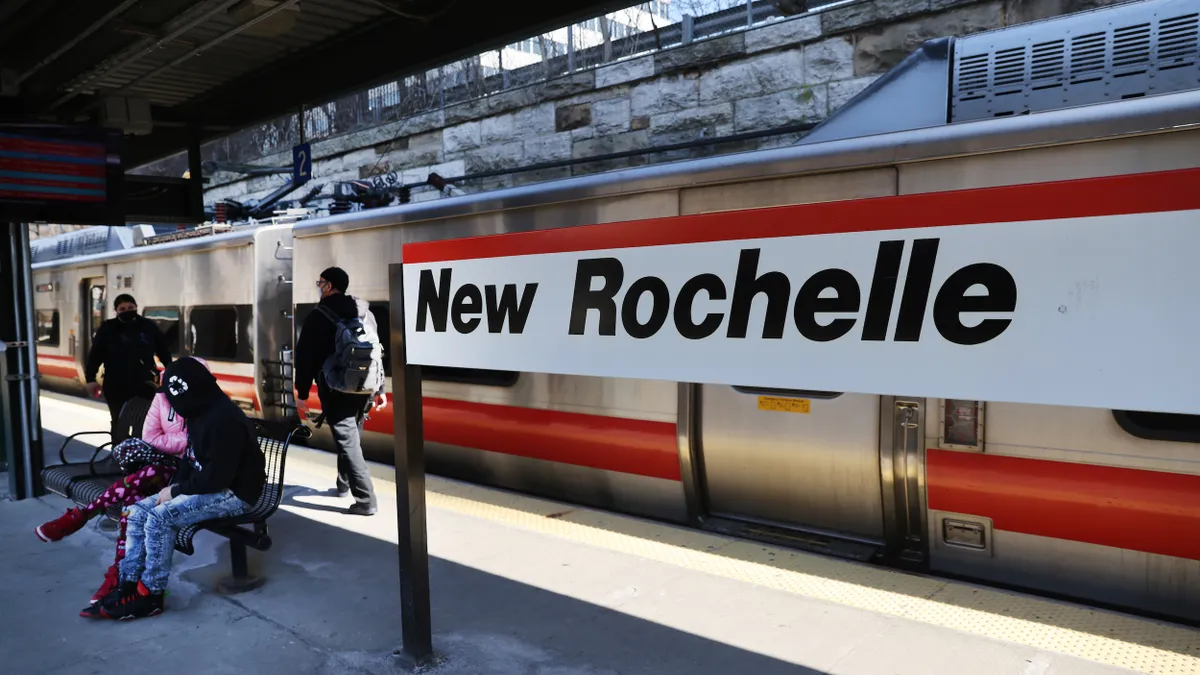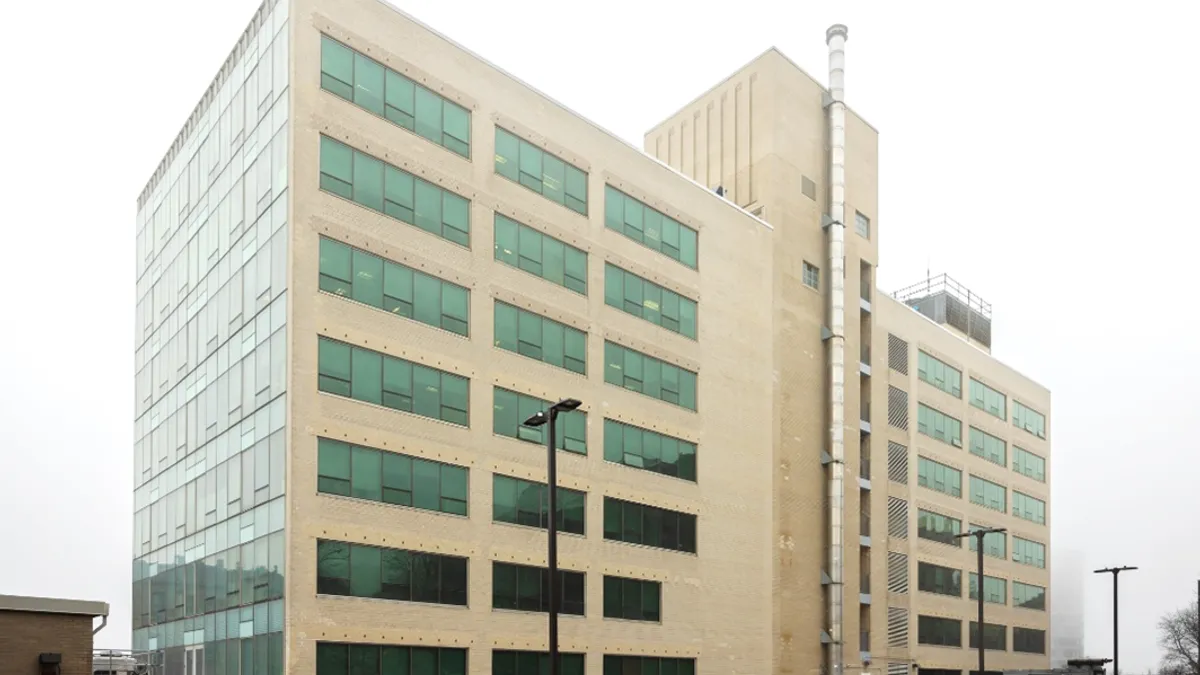Communities must shift to a neighborhood-scale approach to building decarbonization if they want to meet federal and state climate goals, speakers said at a Jan. 25 webinar organized by the Building Decarbonization Coalition.
This emerging strategy focuses on decarbonizing entire street segments, developments or neighborhoods at once.
The current market model for building decarbonization relies on an unmanaged appliance-by-appliance approach, Building Decarbonization Coalition Founder and Executive Director Panama Bartholomy said. Consumers may replace fossil fuel-powered appliances with more climate-friendly versions, like heat pumps, when the original breaks down — which typically only happens every 10 to 20 years, he said.
“We have 110 million buildings [in the U.S]. You can guess that there's perhaps half a billion individual decisions on appliances to be made,” Bartholomy said. In the current market model, the consumer would need to choose the more climate-friendly appliance “every time to be able to eliminate pollution from buildings.”
An unmanaged transition away from fossil fuels in buildings also risks leaving low-income families, renters and hard-to-electrify industries footing the bill as ratepayers who can afford to get off the gas system do so. “As we have customers and usage depart the system, those dollars to maintain the system are spread over a smaller and smaller rate base, which increases rates,” Rachel Kuykendall, principal strategic analyst of decarbonization strategies for Pacific Gas and Electric Co., said on the webinar.
Bartholomy said he envisions neighborhood-scale decarbonization working adjacent to the current market model. Plumbers and HVAC technicians will “still be doing the vast majority of the work between now and 2050, we believe,” he said. “But we need a backstop, we need a climate and equity backstop.”
The following two approaches have emerged as primary ways to decarbonize buildings at a neighborhood scale, webinar speakers explained.
All-in on all-electric
In this approach, an entity such as a utility organizes and manages the electrification of a group of buildings. In some California communities, PG&E is beginning to take on that role.
Sometimes the utility’s neighborhood-scale building decarbonization projects are motivated by finances, Kuykendall explained. When PG&E is faced with an expensive gas line repair, it may be significantly cheaper to electrify the customers on the line instead of repairing it.
The utility has done about 100 of these projects, but they tend to each only affect one or two customers, Kuykendall said. For example, PG&E electrified two farms at the end of a gas line running under a freeway. Repairing the line would have cost $1.2 million and meant a six-month freeway shutdown, while electrifying the customers cost less than $200,000, she said.
Other times, PG&E is motivated to electrify a neighborhood based on equity or risk concerns. “Are there low-income neighborhoods that we'd like to potentially decommission [the gas line in] before they're exposed to higher gas rates?” Kuykendall said. “Are there risky parts of our system that we'd like to decommission?”
The utility has a mapping tool that uses about 500 data points, from pipeline age to where disadvantaged communities live, to determine which areas of the gas system could be a good fit for decommissioning. PG&E allows some cities that have signed a nondisclosure agreement to use the tool, but it’s working on developing a public-facing version.
These projects aren’t always simple, though. “The big elephant in the room” is utilities’ obligation to serve customers in California, Kuykendall said. “If we do have a customer that we approach for this potential savings, and they say no, that sort of sinks our project,” she said. However, the obligation to serve “lives in a bit of a legal gray area,” she added. Experts have questioned whether it means utilities must provide gas specifically or must provide service more generally to the customers that want it.
Utility financing methods can also stand in the way of these projects, Kuykendall explained. Gas pipeline replacement is currently treated as a capital expense, allowing the utility to leverage outside capital and recover the costs over 50 to 60 years, Kuykendall said. Electrification, on the other hand, is not considered a capital expense.
“What that looks like for our ratepayers is a really, really, really big spike in rates in year one, which can be really challenging for doing this work at some significant scale,” Kuykendall said. “What that means is for us, when we do these projects, the electrification has to be about four or five times cheaper than the capital gas repair for them to sort of get on financial parity for us as a utility.”
She urged regulators nationwide to look at creative financial treatments to motivate gas utilities to undertake these projects.
‘Heat is a precious resource’
The other emerging approach to neighborhood-scale decarbonization is thermal energy networks, which allow groups of buildings to share energy through the transfer of heat.
“Heat is a precious resource,” said Jared Rodriguez, principal at the consultancy Emergent Urban Concepts, during the webinar. “If it's a precious resource, why do we do things like cool buildings, and then throw that heat away?”
Heat can, for example, be captured from wastewater and exhaust air, Rodriguez said. Thermal energy networks could use existing gas pipelines to instead transport warmed or cooled water that can be used to heat or cool other buildings in the network, Bartholomy said.
These systems work well in climates that see extreme temperature fluctuations, but they exist in every climate in the world, Rodriguez said.
He urged communities planning thermal energy networks to build diverse coalitions and engage a project developer who understands electric grid constraints, can identify thermal energy resources and potential customers and can finance and build the projects.
When it comes to thermal energy networks, Rodriguez said, “it seems the biggest barrier is finding folks willing to be the connective tissue in a community to organize the pre-development efforts needed to get these projects off the ground.”




















